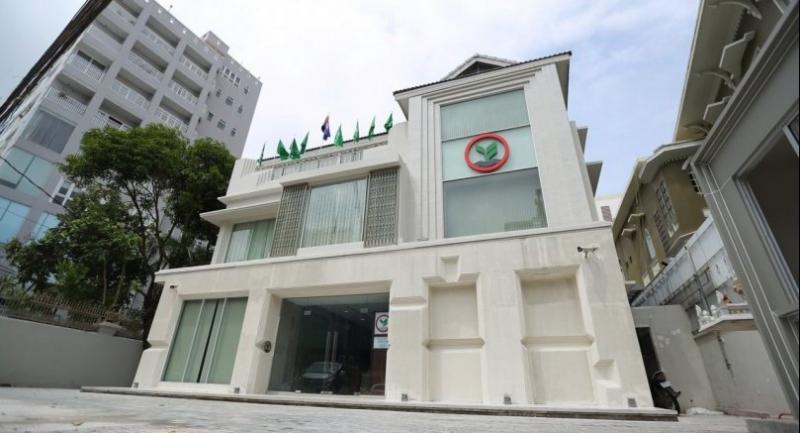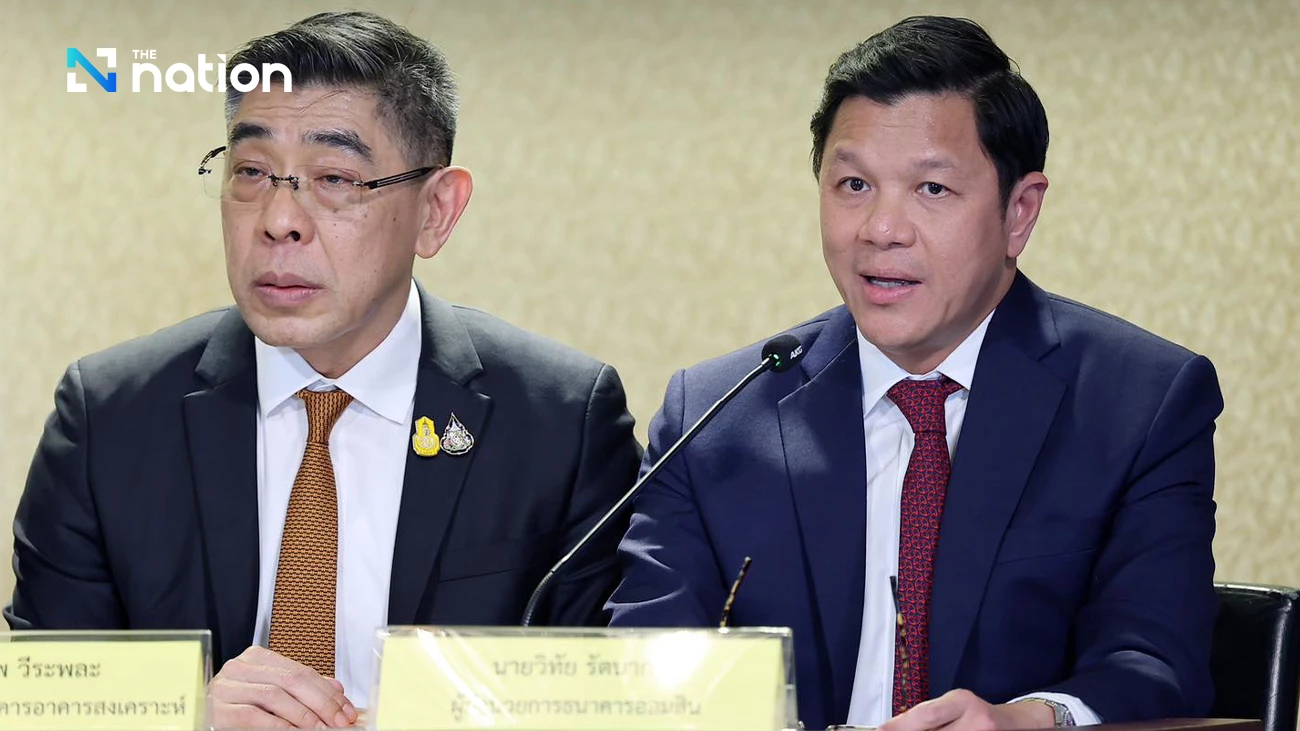KBank opens its first branch in Cambodia

INITIAL FOCUS IS ON LENDING TO THAI FIRMS DOING BUSINESS THERE
KASIKORNBANK, Thailand’s fourth-largest bank by assets, aims to expand its financial services, including microfinancing, to local clients in Cambodia – both business and individual customers – in the next three to five years, in line with rising business activity in the neighbouring country.
KBank yesterday officially opened its first branch in Phnom Penh, with registered capital of US$50 million (Bt1.75 billion).
“We aim for the branch to expand annual lending to Bt2 billion within one to two years, with the priority focus being Thai corporates [doing business in Cambodia], before expanding to local customers within three to five years [from now],” said Predee Daochai, president of KBank.
Its primary focus at this stage will be Thai corporates that are already clients of KBank.
While KBank is permitted to open more branches in Cambodia, its next operation there has to be in the form of a sub-branch, although the latter can also offer financial services as a full branch, he said.
Cambodians generally have a different type of financial-transaction behaviour from Thais, as evidenced by the rapid growth of non-bank agents that provide transaction services, and KBank will closely monitor the activity of such agents, he added.
KBank has partnered with a bank agent in Cambodia – Wing (Cambodia) Limited Specialised Bank – in facilitating money transfers from Thai customers via K-Mobile Banking to recipients in Cambodia.
KBank is the fourth Thai lender to establish a footprint in Cambodia, after Bangkok Bank, Krungthai Bank and Siam Commercial Bank, the last of which operates in the country under its affiliate, Cambodian Commercial Bank.
Predee said that even though his bank was only the latest in a line of Thai banks establishing a presence in Cambodia, he believed it could support the provision of financial services to Thai corporates doing business in the country.
Before opening the branch, KBank in Thailand organised a seminar and business-matching event for customers in Thailand and the Asean Economic Community plus 3 (China, South Korea and Japan) that plan to expand their business into Cambodia.
Healthy economic growth and the neighbouring country’s 22 special economic zones are attracting foreign investors, he said.
Thai investors alone invest about $1 billion per year in Cambodia, he said, adding that Cambodia has one of the fastest-growing economies in the world.
Since 2011, its economy has grown by 7 per cent or more each year and the same pace is expected to continue this year, according to the Asian Development Bank’s “Outlook 2016” report.
Nattavudh Photisaro, the Thai ambassador to Cambodia, said yesterday that the Cambodian economy had the potential to grow by 7 per cent annually over the next five years, after recording 7-per-cent expansion per annum during the past several years.
Construction is the high-growth sector fuelling the economy, he said, adding that Thai investors rank eighth in terms of overall foreign investment in the market.
China, South Korea and Japan are the top three investors in Cambodia.
Cambodia welcomes foreign investment and the regulatory environment is open to such investment, while its labour force and reasonably low wages are a competitive advantage for the country in attracting investors, the ambassador explained.
Cambodia has a population of around 16 million, some 70 per cent of which are aged below 35.
As Cambodia has a successful microfinance sector, financial institutions in Thailand should study the country’s model for microfinance business, said Ronadol Numnonda, assistant governor of the Bank of Thailand.
In the other direction, microfinance operators in Cambodia could expand their footprint into Thailand, but such businesses would have to set up a limited company in the Kingdom or seek local partners to set up joint-venture company in order to do so, he said.
While Thailand is developing its own microfinance sector through nano-finance and pico-finance, lenders that have received nano-finance licences are likely to face high operating costs, causing some operators to have toned down their lending expansion as they need to establish what is the most cost-effective means of keeping on top of bad debt, Ronadol explained.
He said the central bank had received feedback from lenders and would evaluate the situation in regard to nano-finance again.
However, the maximum interest rate of 36 per cent per year that can be charged by nano-finance lenders in Thailand is regarded as reasonable, he added.





